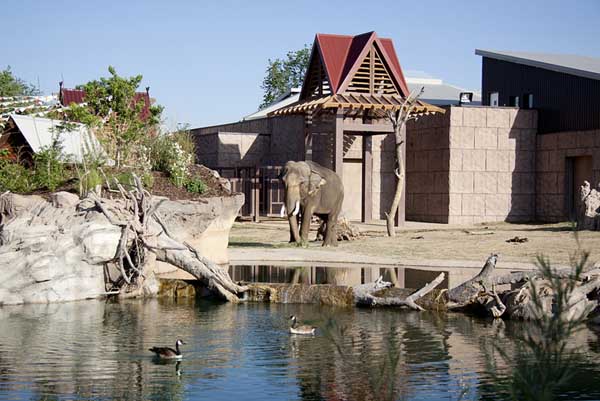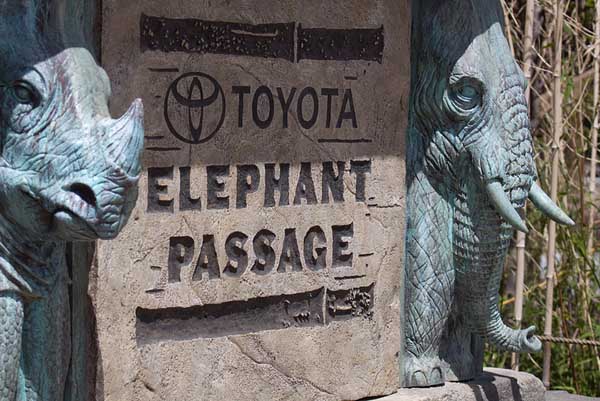Mimi and Dolly, the two elephants who make their home at the Denver Zoo, now have a brand-new, LEED-Platinum-certified habitat to explore: the Toyota Elephant Passage, which is the first large animal exhibit complex in the country to achieve this certification. Along with rhinos, tapirs, gibbons, fruit bats, and the odd big cat, the elephants are now free to roam a network of six interconnected habitats, which affords visitors the opportunity to observe animal interactions in a fun, engaging way.
The passage is about more than family fun, though: in just the past few decades, the wild Asian elephant population has plummeted from more than 100,000 to less than 35,000 – a sobering loss that Denver Zoo President/CEO Craig Piper believes could spell the extinction of these animals within the century. The Toyota Elephant Passage will serve as an important center in collaborative zoo efforts to create a stable insurance population of elephants in human care, while providing providing habitats that offer these large, intelligent animals residing in captivity something most zoos struggle to provide: a great deal of variety and choice in their day.

A key green feature of the facility: a biomass gasification system that makes good, green use of (you guessed it) elephant poo. This gasification system will convert more than 90 percent of the zoo’s waste (which includes both animal waste and human trash) into usable energy to power the exhibit while eliminating 1.5 million pounds of trash from area landfills on an annual basis. This biomass gasification system is expected to be up and running by the end of the year.
A state-of-the-art water filtration system at the Toyota Elephant Passage recycles most of the 1.1 million gallons of water running through its environs, which is then put to use used in its irrigation system and animal exhibits. (Irrigation is also used sparingly here, to lessen overall water demand.

Natural light through skylights and windows decreases electric lighting use throughout the interior buildings of the exhibit. The zoo also utilizes Solatube, a system that reflects sunlight to provide natural light into a space and can be found in six of the buildings. The passage relies on no-maintenance, radiant heating rather than a forced air system to keep the animals (and their human visitors) comfortable during Denver’s cold winters. Extra ventilation and monitoring systems help to ensure healthy indoor air for both, and low-VOC carpets, paints, coatings and adhesives were used throughout
All of which is very much in keeping with the fact that the Denver Zoo, last year, was awarded The Association of Zoos and Aquariums’ (AZA) inaugural Green Award, ranking it as the greenest zoo in the country. In 2009, it also became the first zoo in the country to receive ISO 14001 certification for all of its operations. (This international recognition commits the zoo to the highest environmental standards and requires regular independent outside audits to ensure consistent benchmarking and improvement.)
Half of the funds for the Toyota Elephant Passage ($50 million) came courtesy of the citizens of Denver, who approved improvement bond funds for the zoo in 1999. The remainder of the cash was provided via the Denver Toyota Dealers Association, various foundations and around 3,000 individual donors, who helped the Denver Zoo exceed its $50 million campaign goal for the project.
More about the Denver Zoo’s Toyota Elephant Passage is available online [PDF].